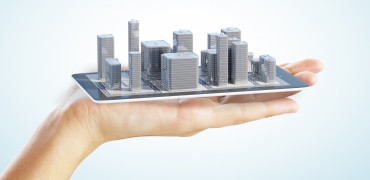Which is more on trend right now: Vienna, or Tokyo?
Well, if you are a global nomad with itchy feet, wanting to discover the number-one most liveable city in the world, there are rankings you can consult to help you choose.
Curated and compiled by the likes of global employee-mobility specialists Mercer and lifestyle and travel magazine Monocle, they purport to index the quality of life in such world-beating urban environments.
Or, you might simply want to pick the happiest place on Earth.
And, sure enough, there are metrics for that too: the World Happiness Index compares 156 different countries, scoring them competitively, with Finland coming top for 2018, plus Togo recently most improved.
How well buildings perform will increasingly be calculated in human-happiness analytics
Rate your building
In principle, deciding where to call home on the basis of liveability and happiness seems perfectly reasonable – let’s face it, nobody would knowingly choose to move to an unliveable city in an unhappy country. It is just perhaps the idea of scoring that seems strange.
However, in many other areas of our daily lives, we are now getting used to rating things, even people.
We stick up to five stars on sellers on eBay, or restaurants and hotels on TripAdvisor, plus give grades to our employers via Glassdoor, even rank romantic prospects on dating apps. When it comes to the user experience, publicly scoring our personal satisfaction is the new normal: we feed back how we feel.
So where does that leave the place where many of us spend the majority of our waking hours: work?
What if developers, architects, engineers, contractors, building and facilities managers were facing rating and review by owners, occupiers, tenants and staff – responding on their smartphones via a public app, giving marks out of 10?
Would it impact the award of a major commission for a new company HQ, if thousands of people on the payroll of the client could jump online and check out the prospective architect’s popularity with occupants sitting in their existing design portfolio?
If the proportion of ‘Terrible’ one-star reviews proved high, would the practice even make it onto the project shortlist?
Post occupancy evaluation
All of this might seem a little far-fetched and futuristic – like some architectural episode of TV sci-fi drama Black Mirror – but, it really is not. In fact, many of the motivating factors and market conditions for it happening are already in play in the modern real-estate sector.
The industry is crying out for effective Post-Occupancy Evaluation (POE) of buildings.
Assessments are becoming mandatory on many public projects and potentially go far beyond audits of performance against the obvious technical and mechanical criteria, such as energy consumption and maintenance costs.
POE is already measuring user-experience impacts in light of behavioural benefits such as worker productivity and absenteeism, plus staff motivation and retention – looking past just SBS in terms of Sick Building Syndrome, towards something more like ‘Sad Building Syndrome’.
Furthermore, leading global accreditation and certification programmes such as BREEAM and LEED now go some way towards recognising health and wellbeing credentials of buildings.
There are also alternative schemes in operation, such as the Well Building Standard and Living Building Challenge, that champion a focus on more people-centric worker-welfare performance and are gaining favour with enlightened employers, as a result.
Building for UX
In addition, the disruptive Proptech revolution continues to attract investment, with London in the vanguard of this new breed of real-estate entrepreneur, operating in the space where High-Street estate agency meets Silicon-Valley gaming culture.
Proptech companies are already employing UX (user experience) designers, to service the needs of built-environment clients in much the same way as they would digital and mobile technology brands. Foxtons, Rightmove and especially Zoopla, for instance, are years into their exploration of applications for Augmented Reality (AR) and Virtual Reality (VR) in residential sales and lettings markets.
Some of the same technology is also being used to trailer and test new and planned designed and built environments via immersive user experiences, plus provide leisure-destination features – as in the case of the VR slide at The Shard, which opened last year.
All these emerging trends are pointing in the same direction: buildings are now to be seen as user-experience environments, potentially combining physical, augmented and virtual realities.
How well they perform will increasingly be calculated in human-happiness analytics, placing them on the scale of Gen Y-appreciation anywhere between abomination and aspiration.
The way forward
For architecture, engineering and construction this will mean learning new language skills if they want their proposals and projects to speak successfully to this new UX audience of raters (and haters).
Building managers will need to translate heating and cooling metrics into measures of personal comfort, lighting numbers into headache counts and ventilation stats into drowsiness data.
Ultimately, the sustainability of commercial real-estate investment could increasingly come down to how it scores against a single, simple question: How does it make you feel?



